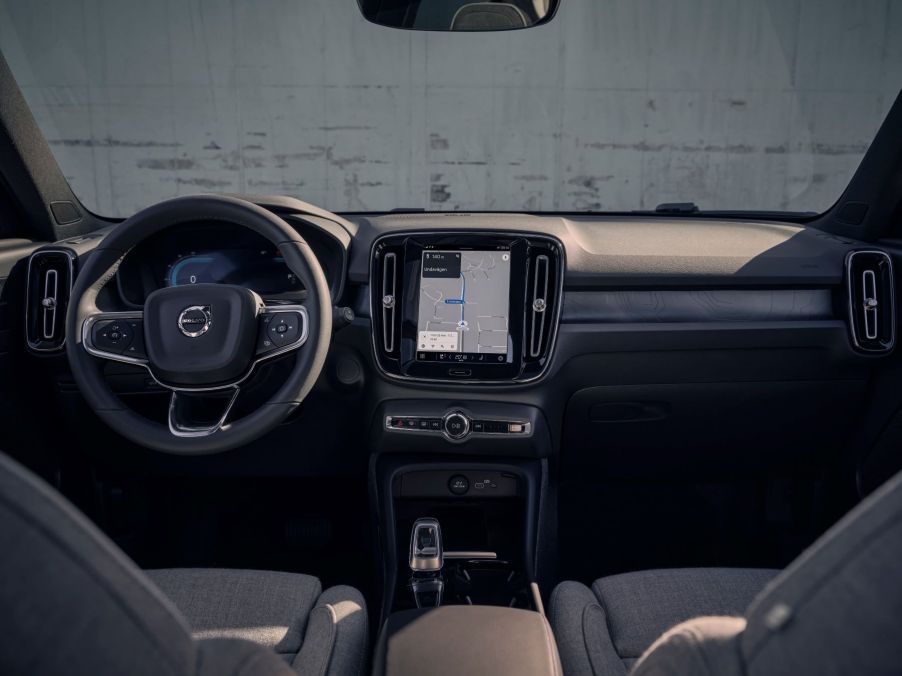
2023 Volvo XC40 Recharge Safety and Driver Assistance Features: Everything You Need to Know
The 2023 Volvo XC40 Recharge is one of the many electric SUV options on the market. It provides a good mix of specs and features. In terms of safety, Volvo lives up to its reputation for making reliable cars, as the XC40 Recharge has a lot of advanced driver assistance systems or ADAS. Here’s a look at the 2023 Volvo XC40 Recharge and all of the ADAS that Volvo offers on it.
An overview of the 2023 Volvo XC40 Recharge
Since the Volvo XC40 Recharge is a compact luxury electric SUV from Volvo, it won’t be cheap. It starts at just under $54,000, and that price tag sits at the more affordable side of things in the segment. At that price point, Volvo offers an SUV that gets a lot of power. The XC40 Recharge comes with two electric motors as standard. Combined, they get 402 hp and 486 lb-ft of torque.
This allows the Volvo SUV to accelerate from 0 to 60 mph in just 4.3 seconds, which is faster than many non-electric cars. Thanks to those two motors, the XC40 Recharge also has all-wheel drive as standard. That said, the XC40 Recharge has a max range of 223 miles, similar to other electric luxury SUVs in the segment, but it’s not the most comfortable range to have.
Volvo offers three trims in total, and the standard trim is called the Twin trim. The second trim option is called the Twin Plus, and the top trim is the Twin Ultimate. The Twin Plus trim starts at about $57,000, and the Twin Ultimate starts at about $60,000. As expected, the premium trims will add more features, including more ADAS.
These are the ADAS that Volvo offers on the 2023 XC40 Recharge

According to Autotrader, the 2023 Volvo XC40 Recharge comes with many ADAS on the standard trim, and the more high-tech ADAS will be available on the Twin Ultimate trim. Common ADAS such as forward collision warning, automatic emergency braking, and a pedestrian and cyclist detection system are all standard on the regular XC40 Recharge. These features can help drivers apply the brakes earlier and, thus, potentially prevent an accident.
Other standard ADAS include lane departure warning, lane keeping assist, a blind-spot monitoring system, rear cross-traffic alert, and automatic rear braking. These features can help drivers stay in their lane and provide more situational awareness in areas with poor visibility, such as the rear. The Volvo also has less common ADAS as standard, including a traffic sign recognition system and a slippery road alert.
Furthermore, oncoming lane mitigation and run-off road mitigation are both standard. They can help drivers steer the car back into the lane to prevent a collision or the vehicle from getting run off the road. Lastly, the top-tier Twin Ultimate trim gets access to Volvo’s Pilot Assist. This ADAS combines adaptive cruise control with Volvo’s semi-autonomous self-driving tech to allow the car to drive itself.
Why these ADAS features are useful to have
As Aptiv wrote, semi-autonomous self-driving tech is not perfect yet, and drivers will still need to be alert and engaged. Regardless, many ADAS have been shown to be remarkably effective at reducing accidents.
For example, forward collision warning can reduce front-end crashes by 27%. Rear automatic braking can reduce rear-ends by 78%. Both of those features are standard on all Volvo XC40 Recharge models. Pilot Assist is similar to other semi-autonomous self-driving features, such as Tesla Autopilot and GM Super Cruise. As such, Pilot Assist can help folks handle freeway traffic more easily.


